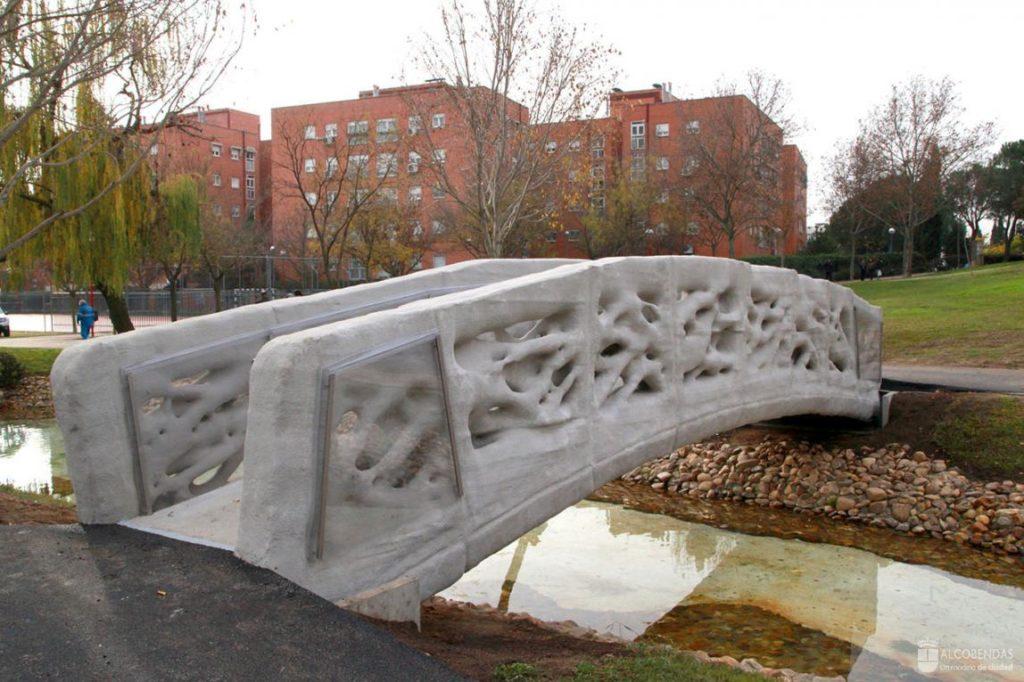European Institutions to Gather in Copenhagen for a Look at How 3D Printing is Disrupting Construction
 Since the very beginning of our species, humans have been required to find ways to shelter themselves from weather and predators. We’ve been wonderfully creative and resourceful in terms of making use of our surroundings – we may have started out by sheltering in natural structures like caves, but once we developed tools, we started using them to make all kinds of neat dwellings from whatever materials we could find around us. Some of us formed soil into bricks and baked them, while others turned snow and ice to their advantage against the cold. As we’ve evolved as a species, our methods of construction have evolved as well, and now many of us live in composites of wood, metal, glass, cement, and all sorts of synthetic materials sealed together by machines to keep us safe and dry.
Since the very beginning of our species, humans have been required to find ways to shelter themselves from weather and predators. We’ve been wonderfully creative and resourceful in terms of making use of our surroundings – we may have started out by sheltering in natural structures like caves, but once we developed tools, we started using them to make all kinds of neat dwellings from whatever materials we could find around us. Some of us formed soil into bricks and baked them, while others turned snow and ice to their advantage against the cold. As we’ve evolved as a species, our methods of construction have evolved as well, and now many of us live in composites of wood, metal, glass, cement, and all sorts of synthetic materials sealed together by machines to keep us safe and dry.
Now, our standards of construction may be on the brink of the biggest change since the beginning of the industrial age. 3D printing has been labeled by some as part of a Fourth Industrial Revolution, and it’s making its presence increasingly known in the construction industry. On February 28, a group of European construction experts will come together in Copenhagen to discuss how 3D printing is changing construction, and how dramatically it may continue to shift the industry.
The conference, which is the first on 3D printed construction to be held in Scandinavia, is being organized by 3D Printhuset and their recently launched consulting company Larsen & Partners. Experts sharing their insights will represent institutions from several European countries, including:
- D-Shape from Italy
- CyBe Construction from the Netherlands
- Lund University from Sweden
- Eindhoven University of Technology from the Netherlands
- Ecole Centrale de Lille from France
The conference will focus on how 3D printing has already changed construction, and how it is likely to impact it in the future. Speakers include D-Shape founder Enrico Dini, one of the pioneers in the 3D printed construction industry.
“Already when I was in my 40’s, I understood that 3D printing could be the way to affordably achieve beauty in architecture and construction, and since then I devoted my life to make it happen,” said Dini. “Within the next decades I imagine that our future urban landscape will be enriched by architectural, algorithmic and topology optimized buildings, perfectly harmonized with the environment due to 3D printed constructions.”
While methods of 3D printing buildings are varied, the technology is starting to show itself as superior in many ways to our long-established construction methods. It’s much faster overall; one of the most famous examples of a 3D printed building so far is the sleek, seamless-looking office building unveiled in Dubai last year. The first-ever office to be 3D printed, the structure took a mere 17 days to create. While the methods may differ, the benefits of 3D printed construction are pretty universal, saving not only time but money and materials.
“In the building industry we are very focused on how we can increase productivity and reduce the amount of materials used,” said Hans Blinkilde, Business Development Manager at NCC Construction, one of the largest contractors in Scandinavia. “Therefore, there are many good reasons to investigate the possibilities of more automated and less materials consuming technologies. 3D construction printing is one of such technologies that we are following at close hand, and in which we see a large potential.”
Architects also love 3D printing for the design freedom it allows; buildings can now be designed and constructed in shapes that are impossible to create through any traditional construction method. Other 3D printed buildings have shown the potential to keep us safer than we’ve ever been in our own homes before. A two-story house printed by Chinese firm HuaShang Tengda last year was designed to withstand earthquakes as strong as 8 on the Richter scale, and the 3D printed Lewis Grand Hotel in the Philippines is also stronger than typical concrete buildings. The design freedom of 3D printing isn’t just a novelty that allows for fun-shaped buildings; it also eliminates some of the constraints that leave structures vulnerable to disaster.
“The possibilities within 3D construction printing are fascinating, especially for architects,” said architect and TV host Emil Thorup, who will be presenting and moderating at the conference. “With 3D construction printing we have a much higher degree of freedom when shaping the design of buildings.”
Ironically, as 3D printing technology evolves, taking us into an age of stronger, more efficient, better buildings, it also, in a way, takes us back to the very beginning of construction when all we had to work with was the soil around us. In situ building materials have been much talked about as the future of 3D printed construction; look at the Shamballa project, for example, which aims to create a fully sustainable, self-sufficient village 3D printed from locally sourced earth and straw. Such technology has the potential to create safe, strong homes in even the poorest and most remote areas, using only what materials can be obtained from the ground – and it may even allow us to build on the moon and Mars.
3D printing is being described as “disruptive” in many industries, and the February 28 conference will focus on how it is disrupting the construction industry, in the most positive ways. 3D Printhuset and Larsen & Partners have worked on more than 30 3D printed construction projects in the last year alone, which they will discuss along with some of the other recent milestones in 3D printed construction, like the 3D printed pedestrian bridge recently unveiled in Spain. The conference will be held at the Danish Technological Institute in Copenhagen. You can learn more and register here. Discuss in the 3D Printing in Construction forum at 3DPB.com.
Subscribe to Our Email Newsletter
Stay up-to-date on all the latest news from the 3D printing industry and receive information and offers from third party vendors.
You May Also Like
3D Printing Unpeeled: New Arkema Material for HP, Saddle and Macro MEMS
A new Arkema material for MJF is said to reduce costs per part by up to 25% and have an 85% reusability ratio. HP 3D HR PA 12 S has been...
3D Printing News Briefs, January 20, 2024: FDM, LPBF, Underwater 3D Printer, Racing, & More
We’re starting off with a process certification in today’s 3D Printing News Briefs, and then moving on to research about solute trapping, laser powder bed fusion, and then moving on...
3D Printing Webinar and Event Roundup: December 3, 2023
We’ve got plenty of events and webinars coming up for you this week! Quickparts is having a Manufacturing Roadshow, America Makes is holding a Member Town Hall, Stratafest makes two...
Formnext 2023 Day Three: Slam Dunk
I’m high—high on trade show. I’ve met numerous new faces and reconnected with old friends, creating an absolutely wonderful atmosphere. The excitement is palpable over several emerging developments. The high...



































